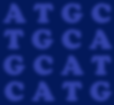A - single shot; B - composition of 46 images; Lumix LX3 - SA100 diffraction filter - 60mm lens - ISO400 - f/2.8 - 25 seconds.
Tuesday, December 24, 2013
Orion star trails through spectroscope
Orion star trails through diffraction filter SA100. Spectrum of hot Rigel is different form colder Betelgeuse. Spectrum of M42 Orion Nebula is distinct from contiguous patterns of star spectra. See more about astronomical spectroscopy and stellar classification at http://en.wikipedia.org/wiki/Astronomical_spectroscopy and http://en.wikipedia.org/wiki/Stellar_classification
A - single shot; B - composition of 46 images; Lumix LX3 - SA100 diffraction filter - 60mm lens - ISO400 - f/2.8 - 25 seconds.
A - single shot; B - composition of 46 images; Lumix LX3 - SA100 diffraction filter - 60mm lens - ISO400 - f/2.8 - 25 seconds.
Labels:
Betelgeuse,
Lumix LX3,
M42,
Orion,
Orion Nebula,
Rigel,
Star Spectroscope,
star trails,
stellar spectra
Diffraction grating filters: SA-100 vs RO-200
Rainbow Optics RO-200 provides more details in star spectra, more absorption lines are visible/detectable. Star Analyzer SA-100 is better for faint stars since generated spectrum is narrow.
Afocal stellar spectroscopy setup
Afocal stellar spectroscopy with RO-200 and SA-100 grating filters, Celestron XLT 150 Newton telescope, and Lumix LX3 camera
Afocal setup with Lumix-LX3, extension adapters and Plossl 25mm:
Diffraction grating filters (RO-200 or SA-100) are attached to afocal setup through a set of eyepiece extension rings. Disassembled Barlow unit is used as major extension adapter:
Completely assembled unit (spectroscope grating filter + extension rings + Plossl 25 + camera adapter + photo camera) is inserted into telescope focuser (Celestron XLT 150 Newton). Barlow barrel allows to rotate grating filters independently from camera to adjust appropriate spectrum direction for drift style photography:
Examples of stellar spectra through SA-100 (Aldebaran and Castor):
Examples of stellar spectra through RO-200 (Vega, Sirius and Betelgeuse):
Aldebaran spectrum SA-100 vs RO-200:
Capella spectrum SA-100 vs RO-200:
Subscribe to:
Posts (Atom)










